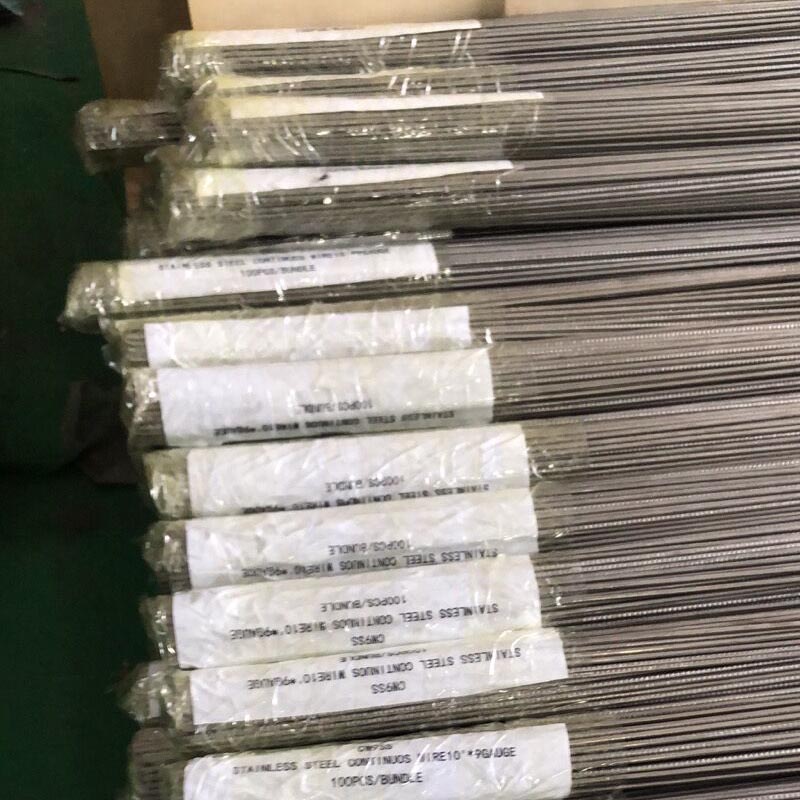
- Mobile Phone
- +8613931874955
- sales@cntcmetal.com
wire form springs
Understanding Wire Form Springs Design, Applications, and Benefits
Wire form springs are essential components used in various mechanical applications. They are manufactured from coiled wire and can take various shapes and forms, offering versatility and flexibility in design. This article will delve into the characteristics, manufacturing processes, applications, and advantages of wire form springs, providing a comprehensive understanding of their significance in modern engineering.
What Are Wire Form Springs?
Wire form springs are a type of spring that is created by bending wire into a specific shape or configuration. Unlike traditional coil springs, which are typically wound into cylindrical shapes, wire form springs can be designed in multiple forms, including flat, conical, or custom shapes. These springs are made from different materials, including stainless steel, carbon steel, and several alloys, making them suitable for various environments and applications.
Manufacturing Process
The manufacturing of wire form springs involves several key steps
1. Material Selection The choice of material is critical, as it affects the spring's performance and durability. Common wire materials include high-carbon steel for its strength and resilience, and stainless steel for enhanced corrosion resistance.
2. Wire Shaping The wire is fed into a bending machine equipped with precision tooling. The machine bends and shapes the wire into the desired configuration according to engineering specifications. CNC (Computer Numerical Control) machines are often used for high precision and consistency.
3. Heat Treatment After shaping, the spring may undergo heat treatment processes, such as annealing or hardening, to enhance its mechanical properties, increase strength, and extend lifespan.
4. Finishing Following heat treatment, the springs may be coated or treated for protection against corrosion and wear. Options include plating, painting, or using specialized coatings.
5. Quality Testing Finally, the finished wire form springs are inspected and tested to ensure they meet the necessary specifications and performance criteria.
Applications of Wire Form Springs
wire form springs

Wire form springs are utilized across a variety of industries due to their adaptability and functional capabilities. Here are some common applications
- Automotive Industry Wire form springs are used in suspension systems, seat mechanisms, and various engine components, providing necessary support and flexibility.
- Electronics In the realm of electronics, these springs are found in connectors, switches, and circuit boards, ensuring proper functioning and reliability.
- Industrial Equipment Many types of machinery rely on wire form springs for tension and compression, helping to absorb shocks and maintain operating efficiency.
- Consumer Products Everyday items, from toys to kitchen appliances, often incorporate wire form springs to enhance functionality and improve ergonomics.
Benefits of Wire Form Springs
One of the primary benefits of wire form springs is their design flexibility. Engineers can create custom shapes and configurations that precisely meet the requirements of specific applications. This customization extends not only to geometry but also to material selection, ensuring that each spring performs optimally under its operational conditions.
Another advantage is their ability to handle high loads while remaining relatively lightweight. This characteristic is crucial in industries like aerospace, where reducing weight without compromising strength is a priority.
Wire form springs also exhibit excellent fatigue resistance, which means they can endure repeated cycles of loading and unloading without failing. This durability translates to reliability in applications where failure is not an option.
Conclusion
Wire form springs are integral components in numerous applications, demonstrating versatility, strength, and design flexibility. Their unique manufacturing processes allow for custom designs tailored to specific needs, making them invaluable in various industries. As technology continues to advance, the demand for innovative wire form springs is expected to grow, further emphasizing their significance in mechanical engineering and design. Understanding their characteristics and applications can help professionals select the right spring for their needs and harness their full potential. Whether in automobiles, electronics, or industrial machinery, wire form springs remain a foundational element in modern engineering solutions.
share:
-
Why Sacrificial Formwork Is Redefining Underground ConstructionNewsJun.06,2025
-
The Structural Dynamics of Modern Concrete: How Snake Spacers Revolutionize Flexible ReinforcementNewsJun.06,2025
-
Snake Spacers Smart-Lock Concrete Reinforcement with Surgical PrecisionNewsJun.06,2025
-
Snake Spacers: Reinforcement Precision for Modern Concrete ProjectsNewsJun.06,2025
-
Snake Spacers Powering Concrete's Structural DNANewsJun.06,2025
-
Slither into Success: Snake Spacers' Precision Bite for Unbreakable ReinforcementNewsJun.06,2025
-
Sacrificial Formwork: Building Stronger, Faster, and Safer StructuresNewsJun.06,2025



















